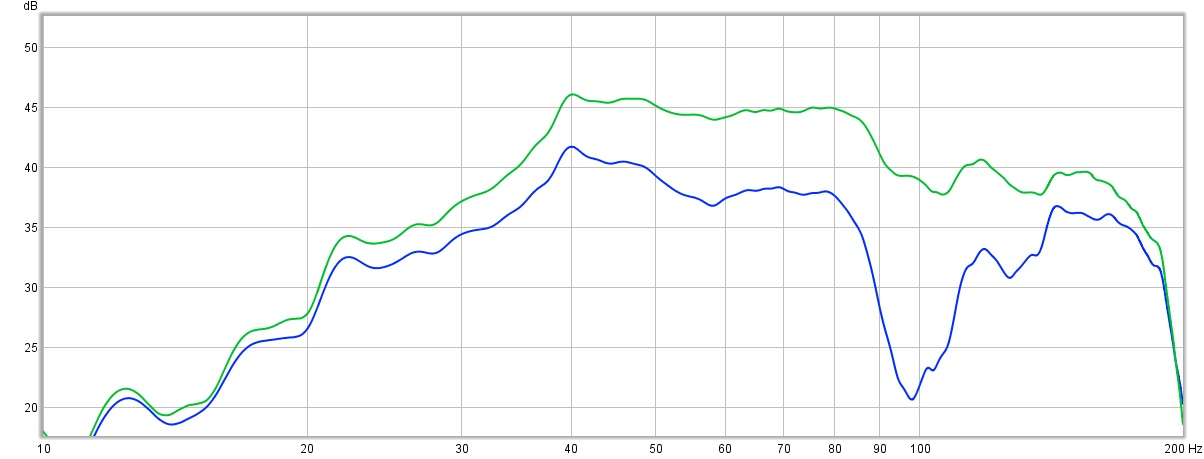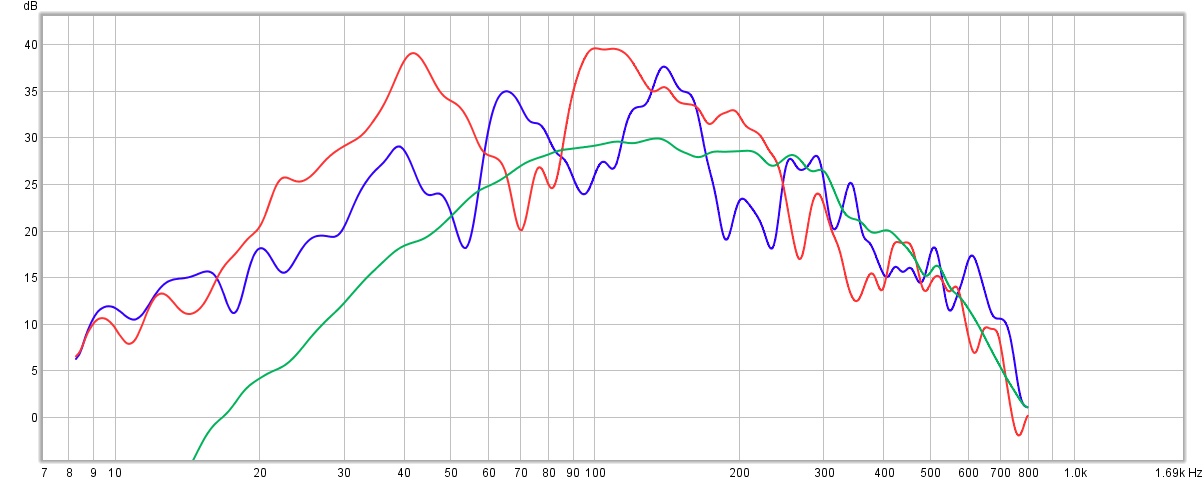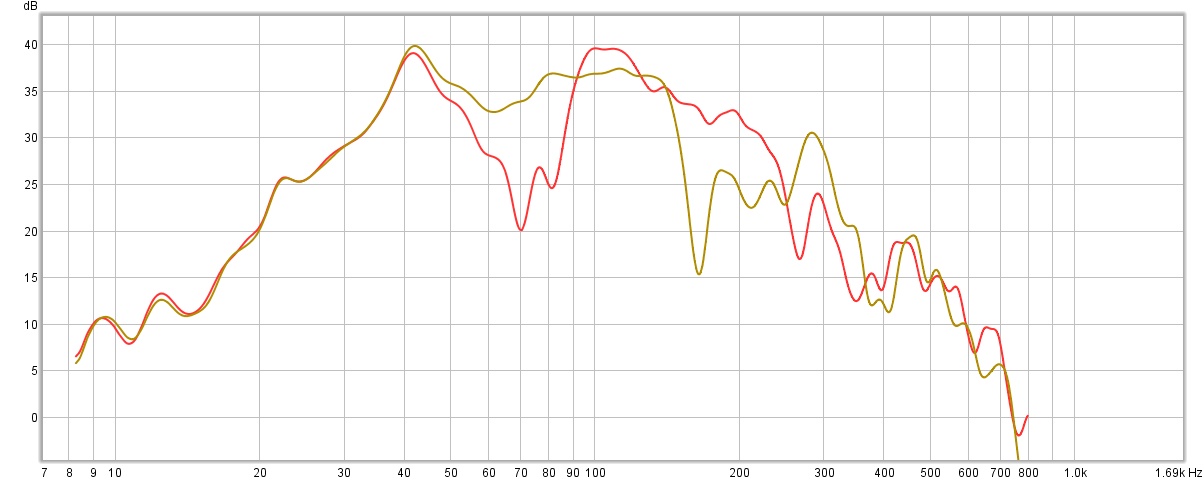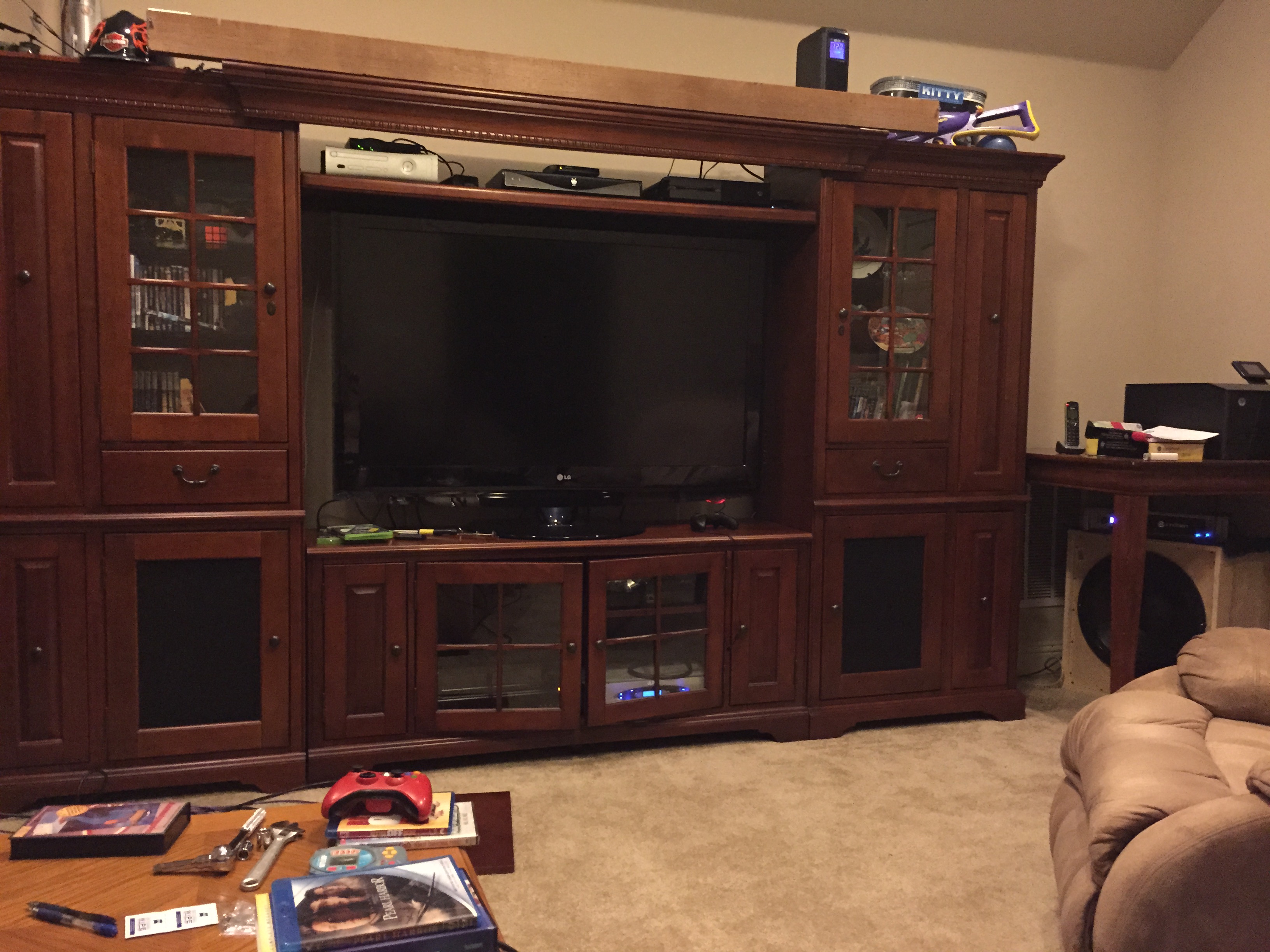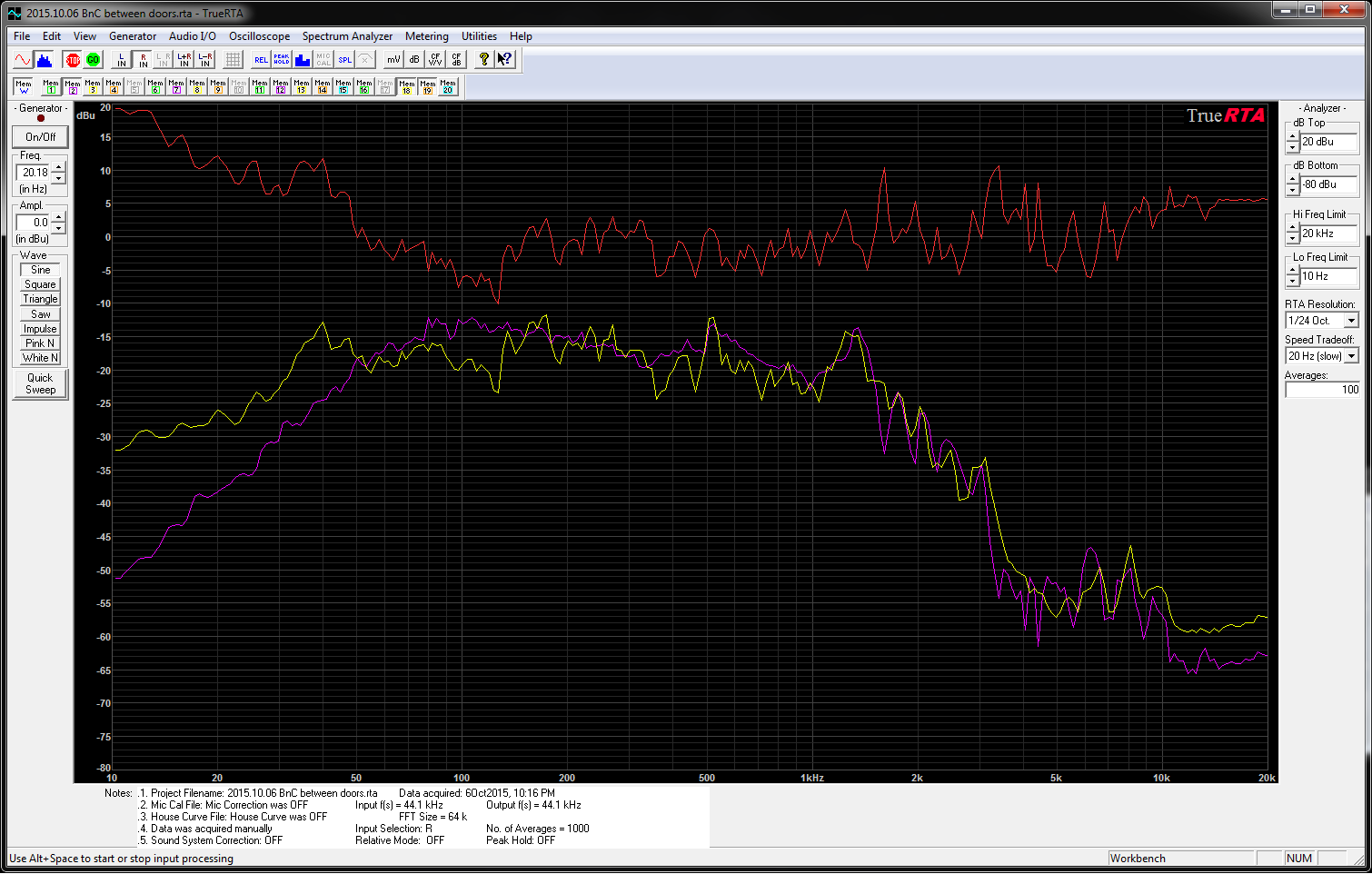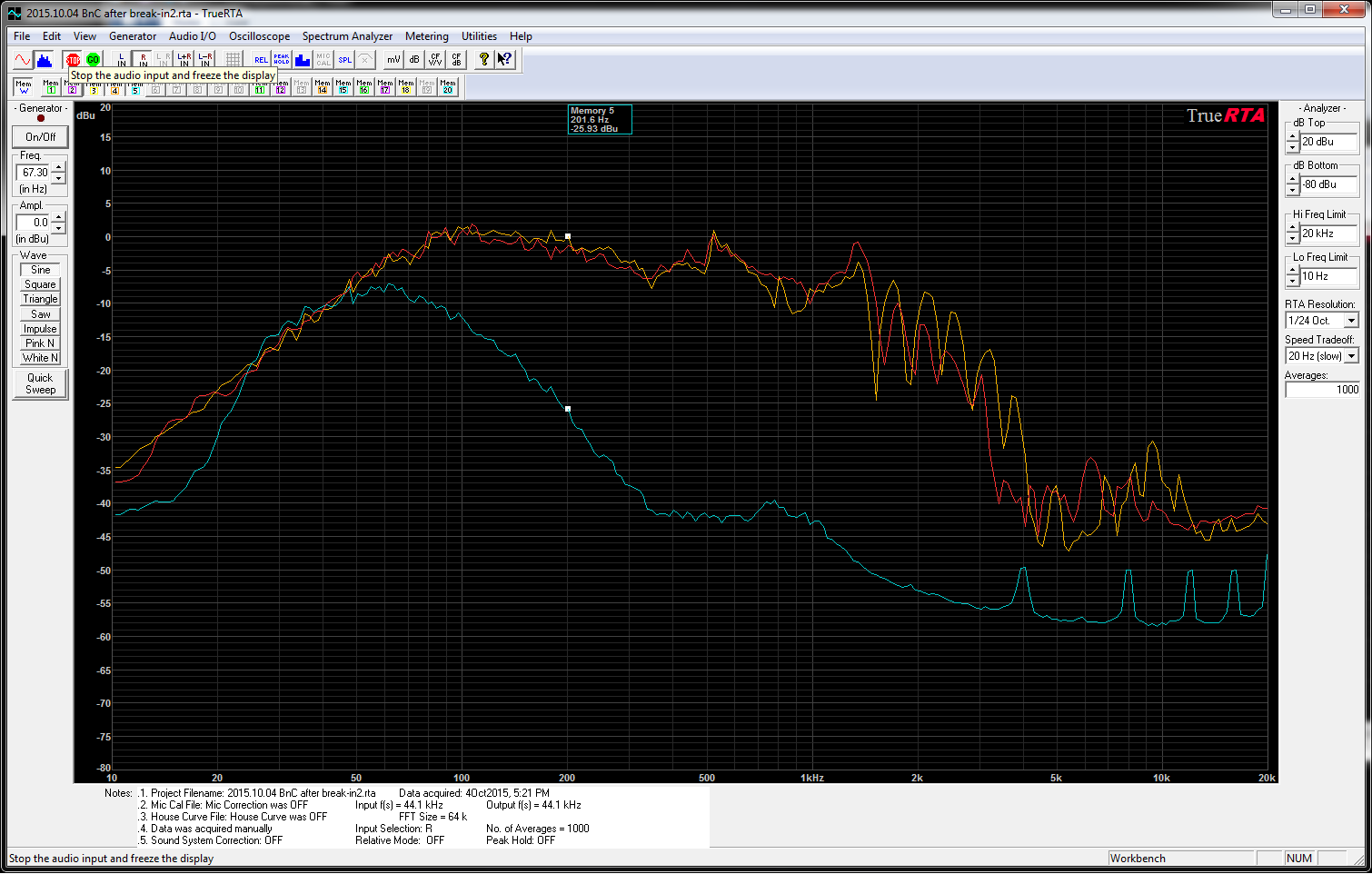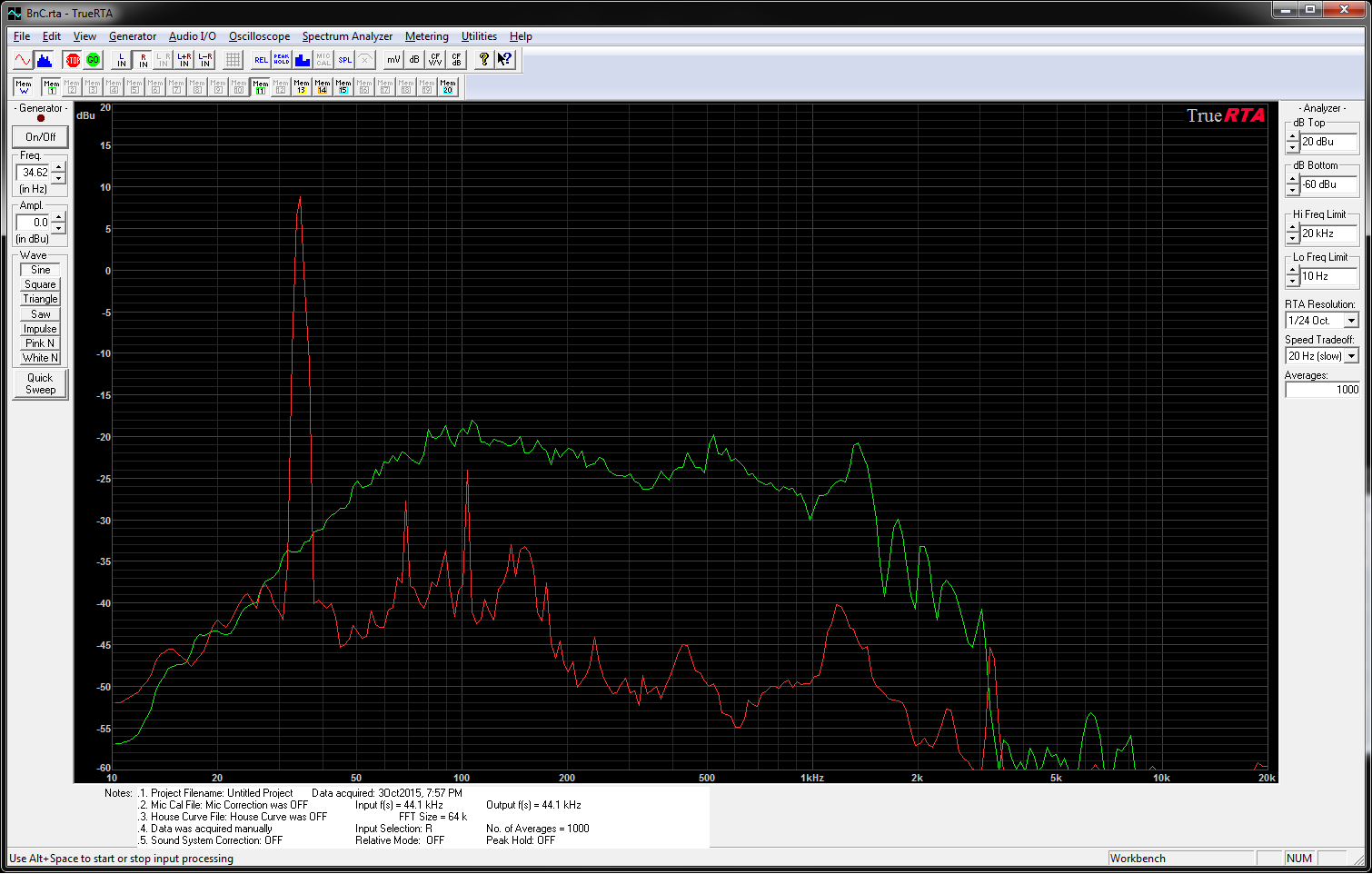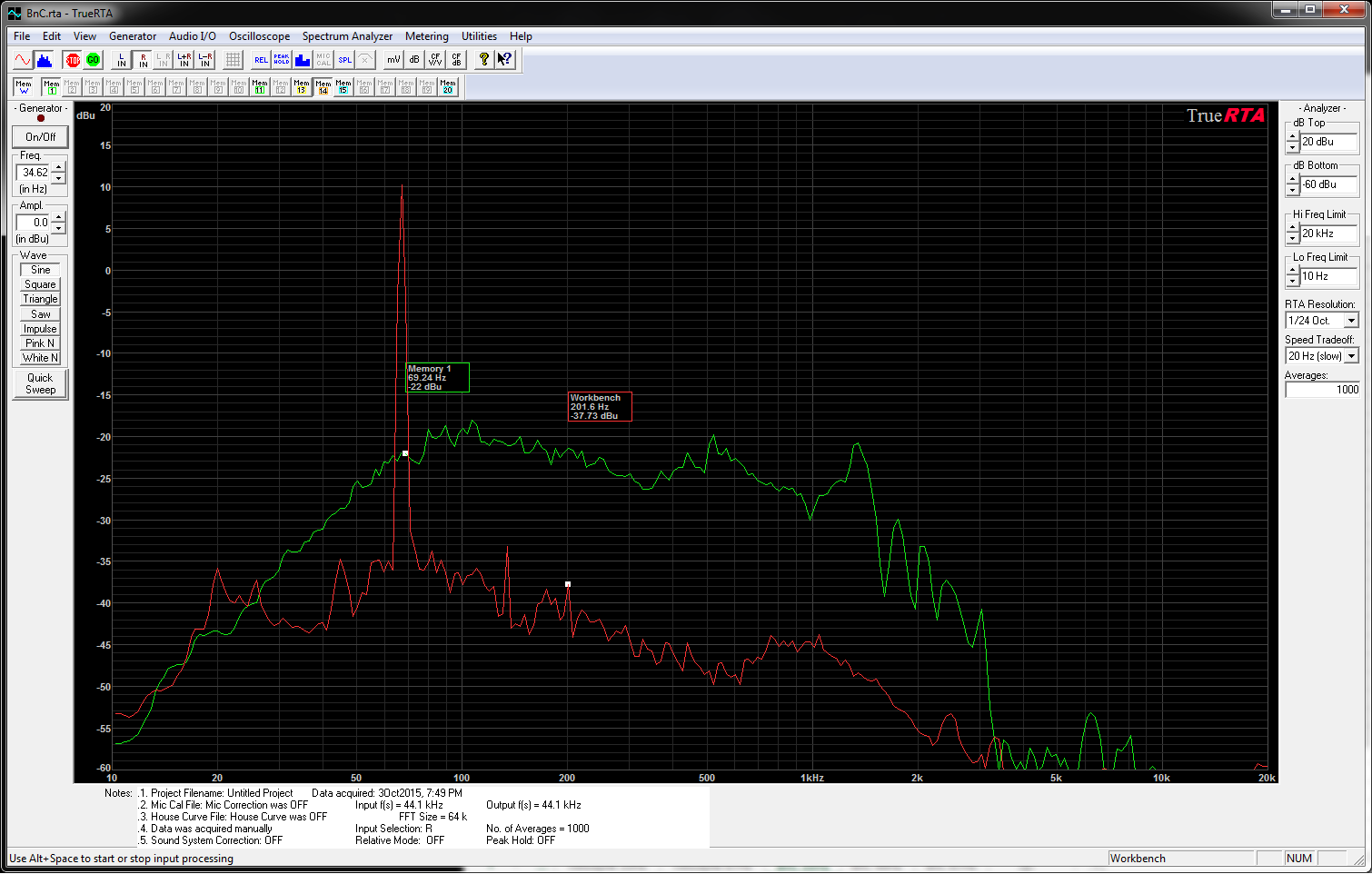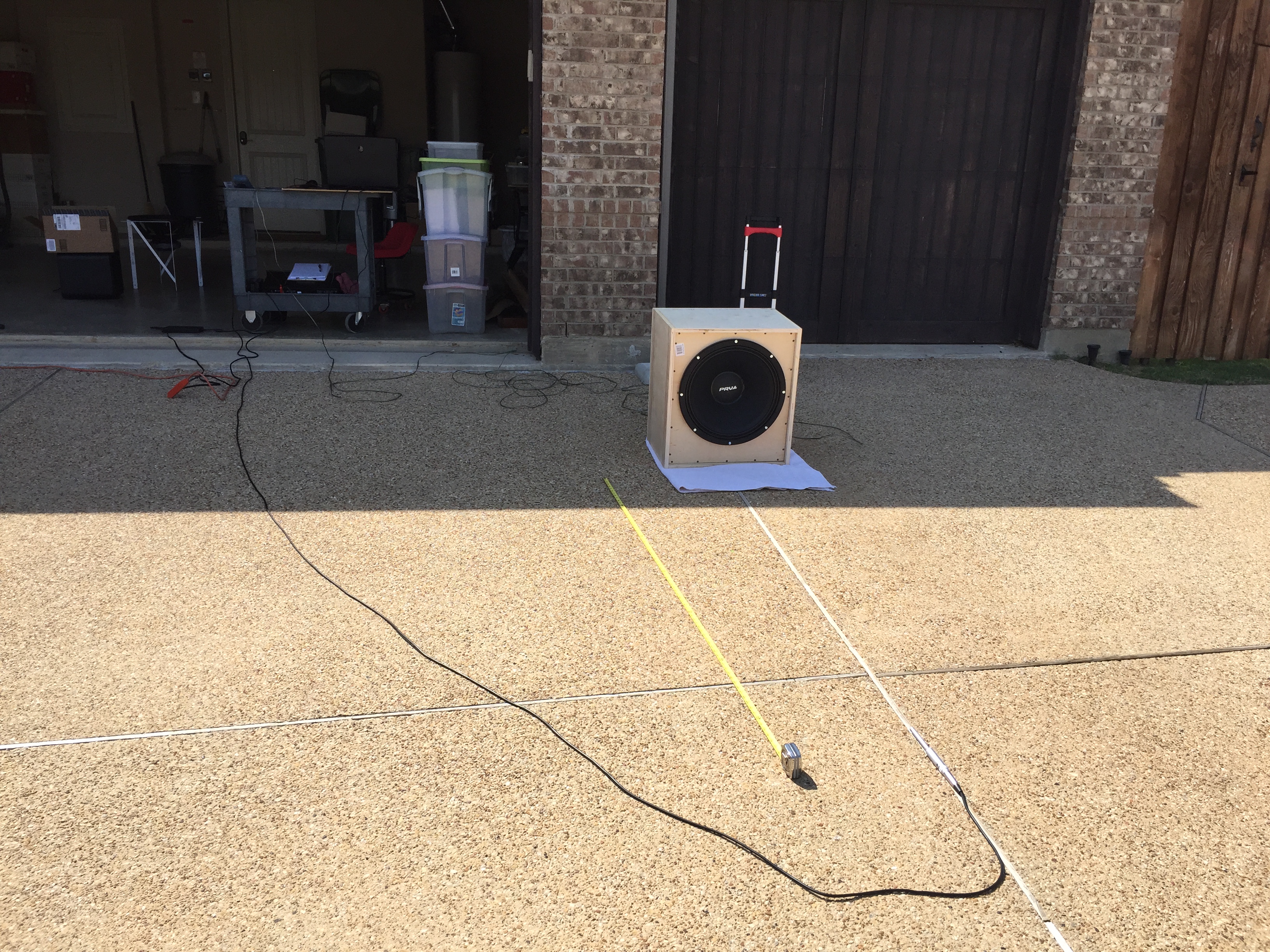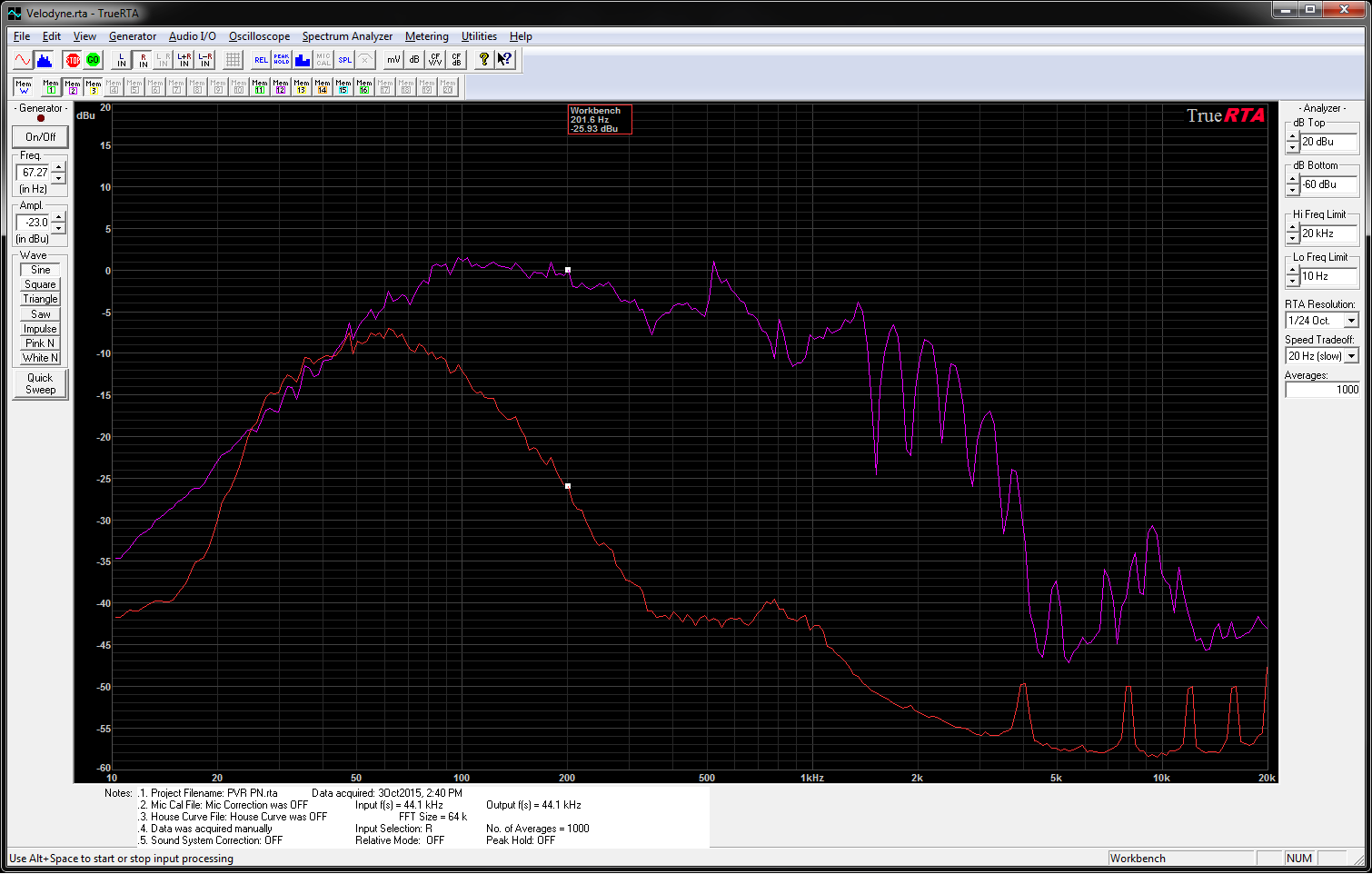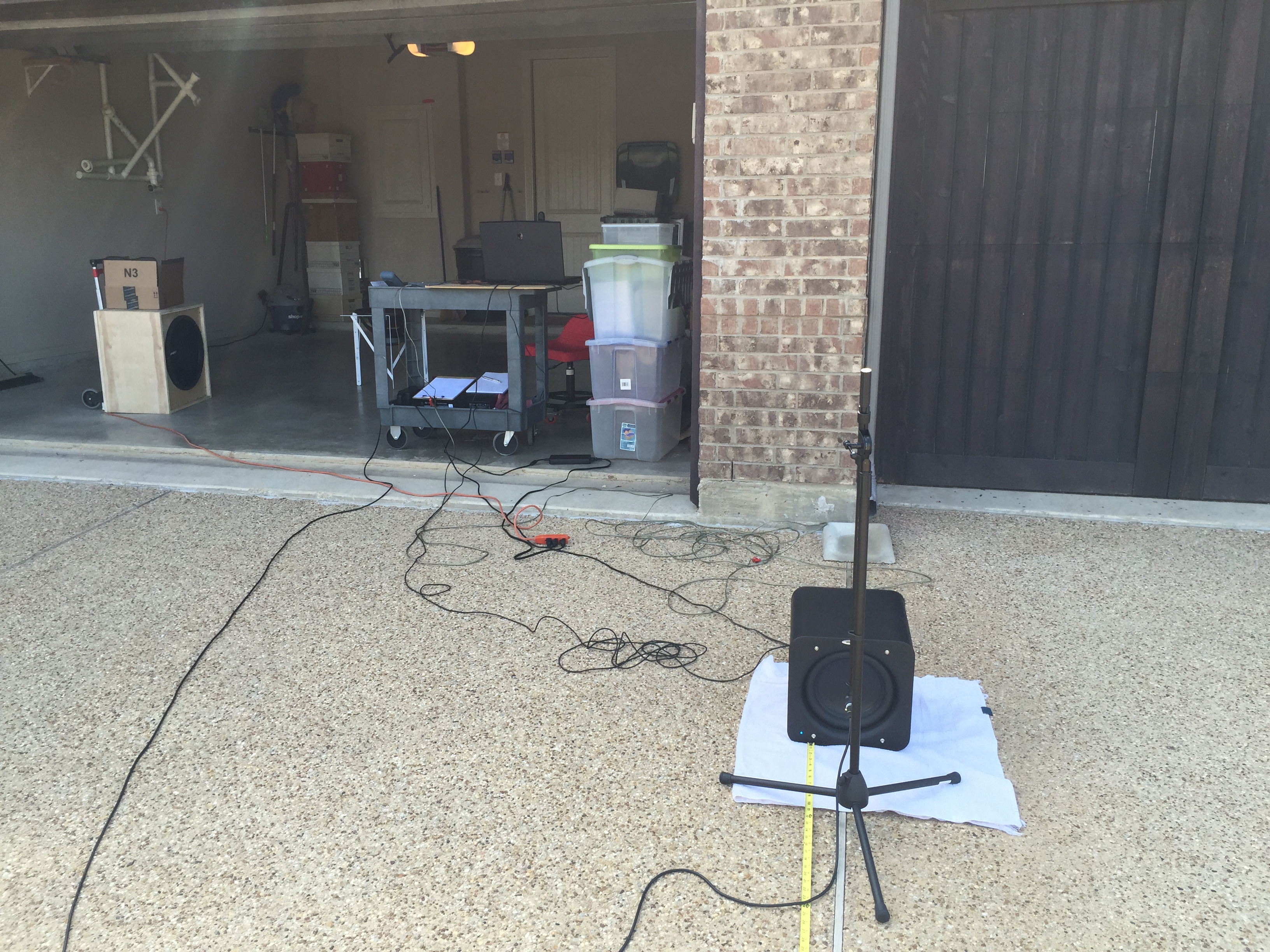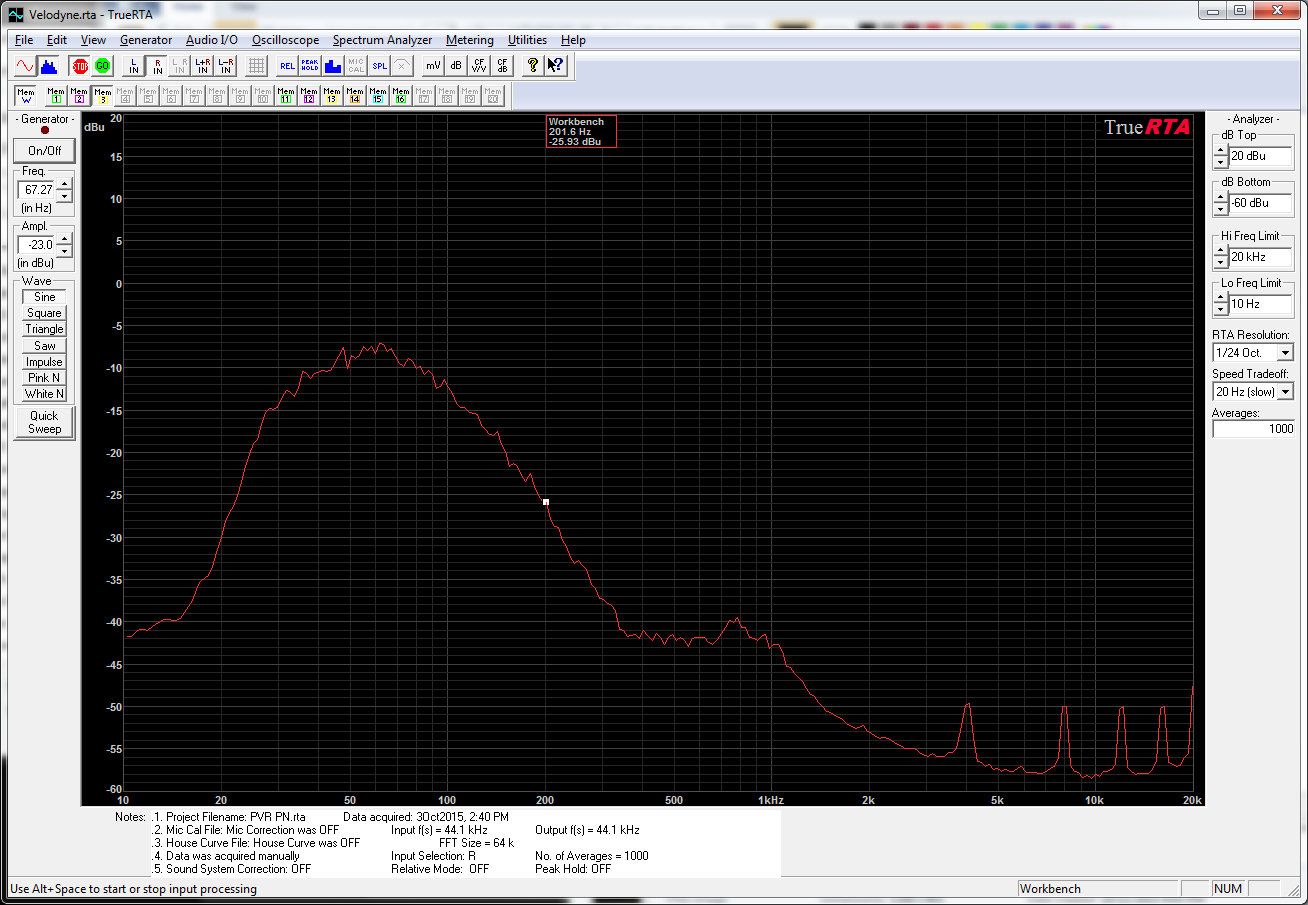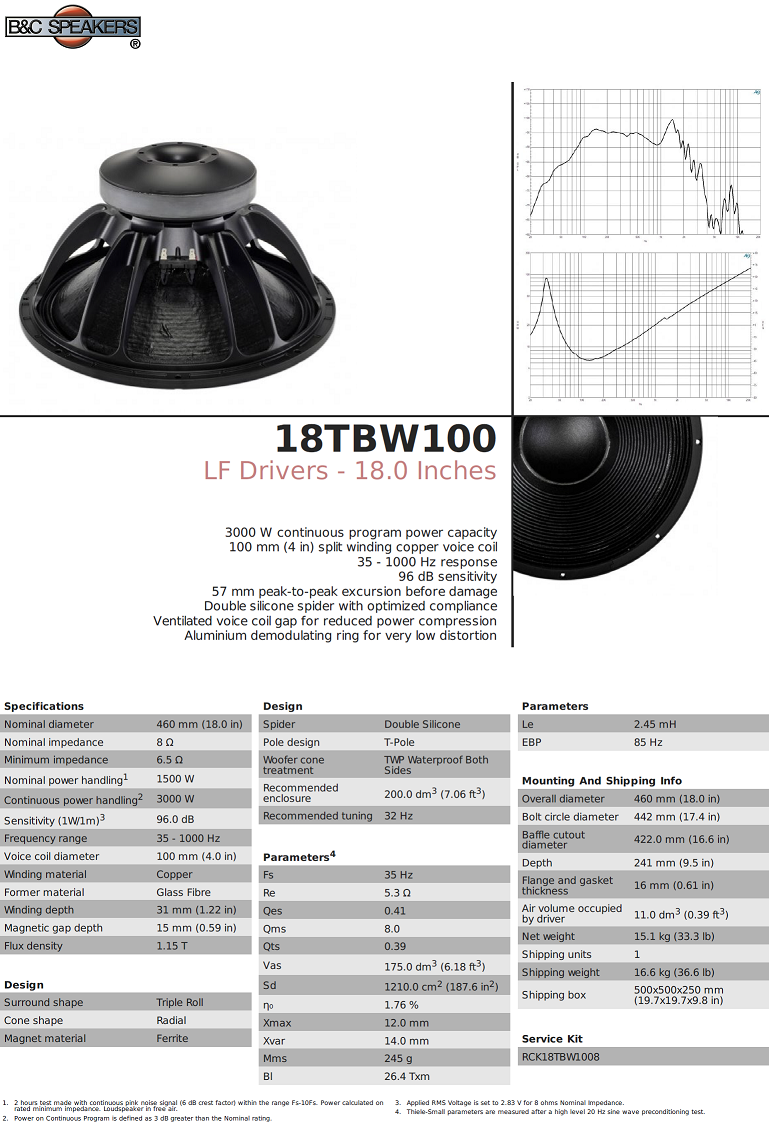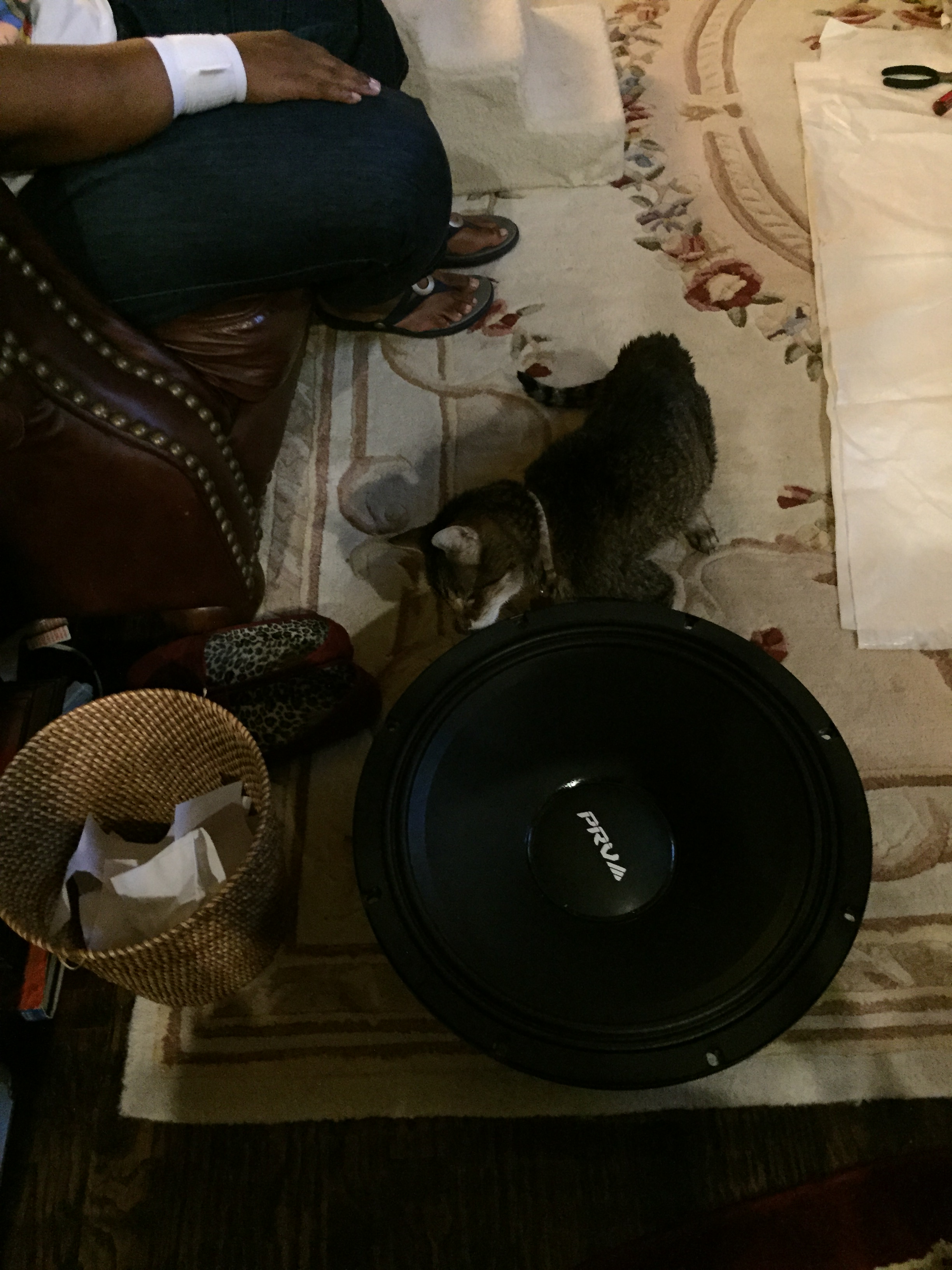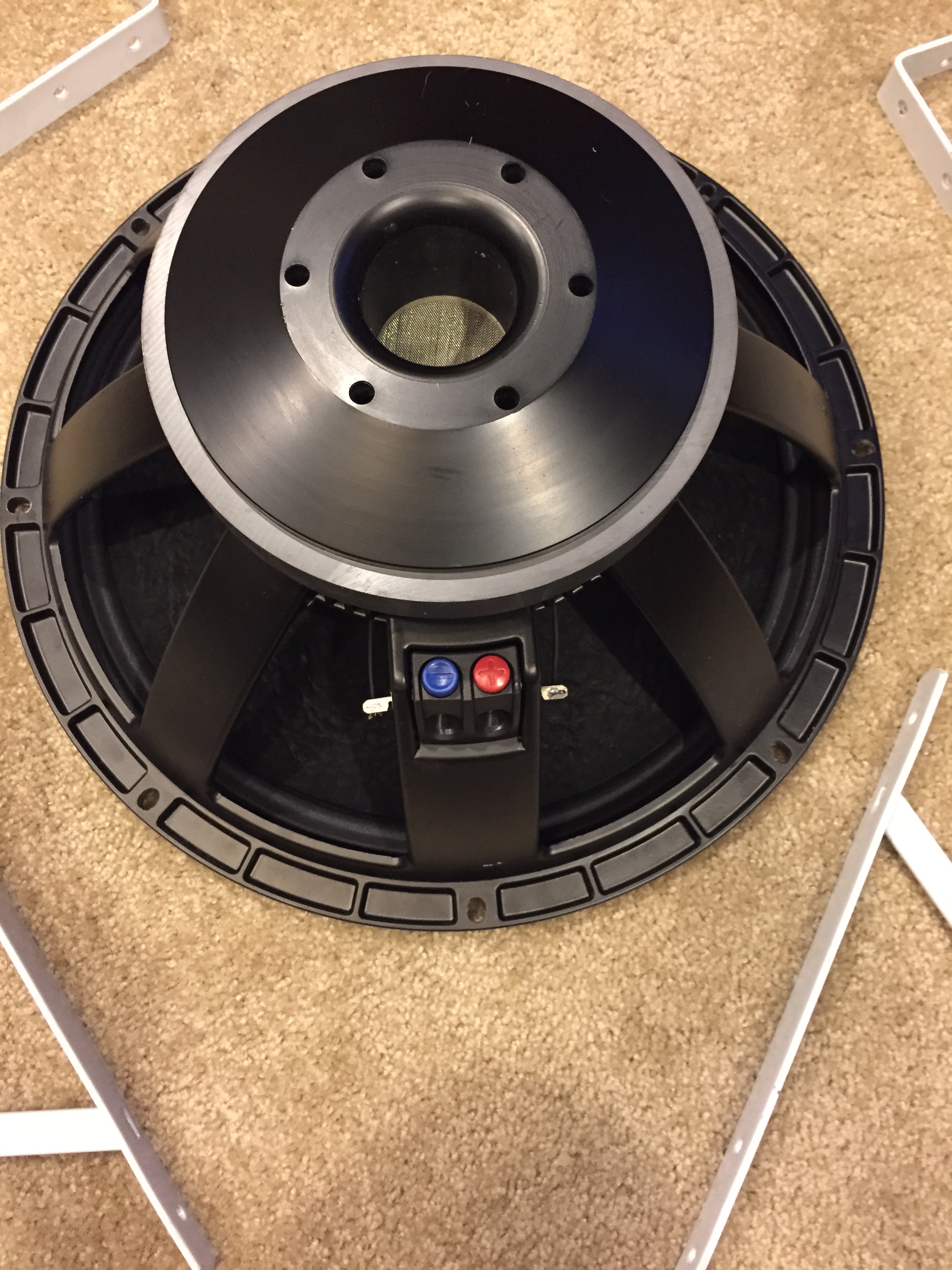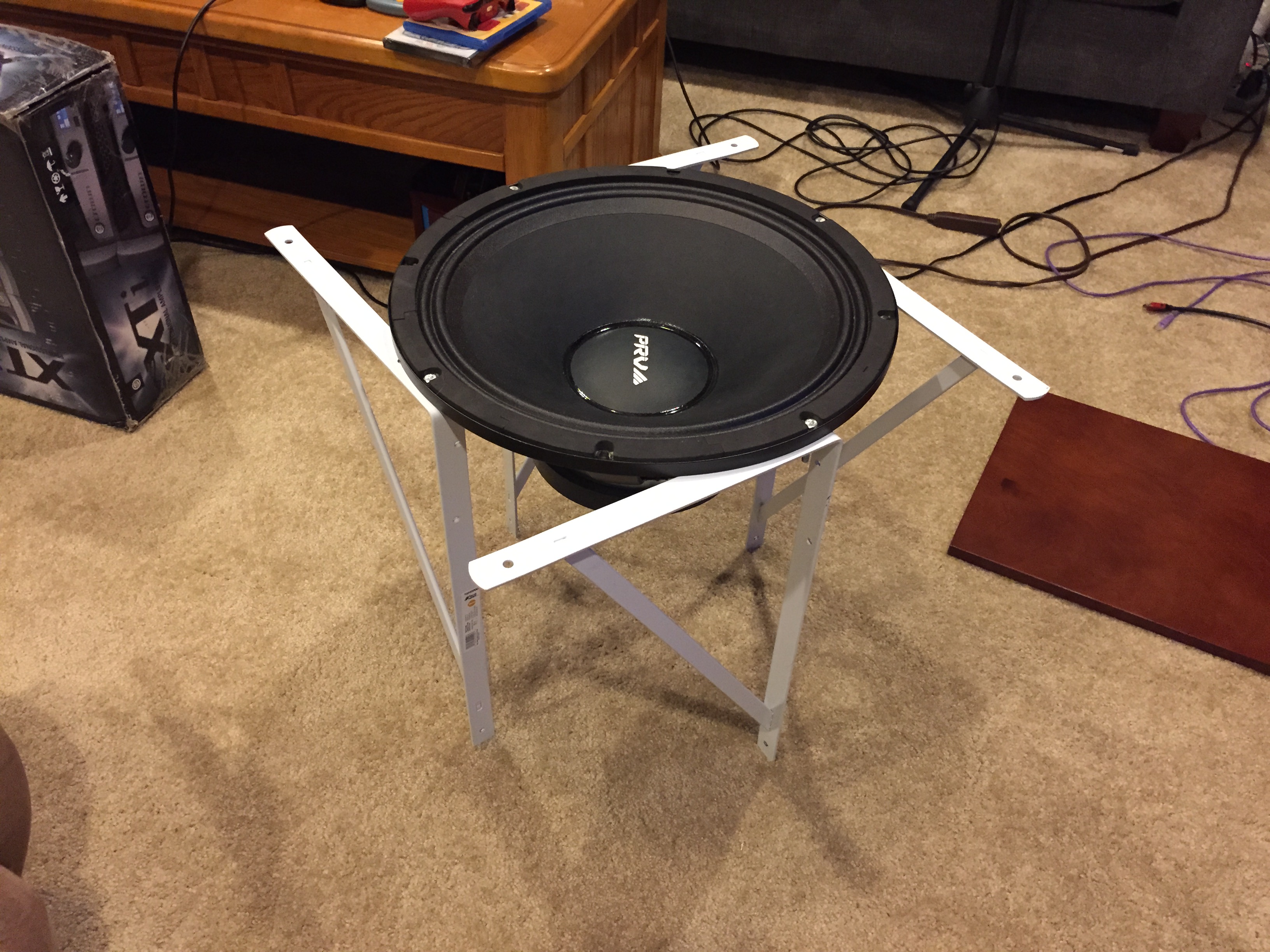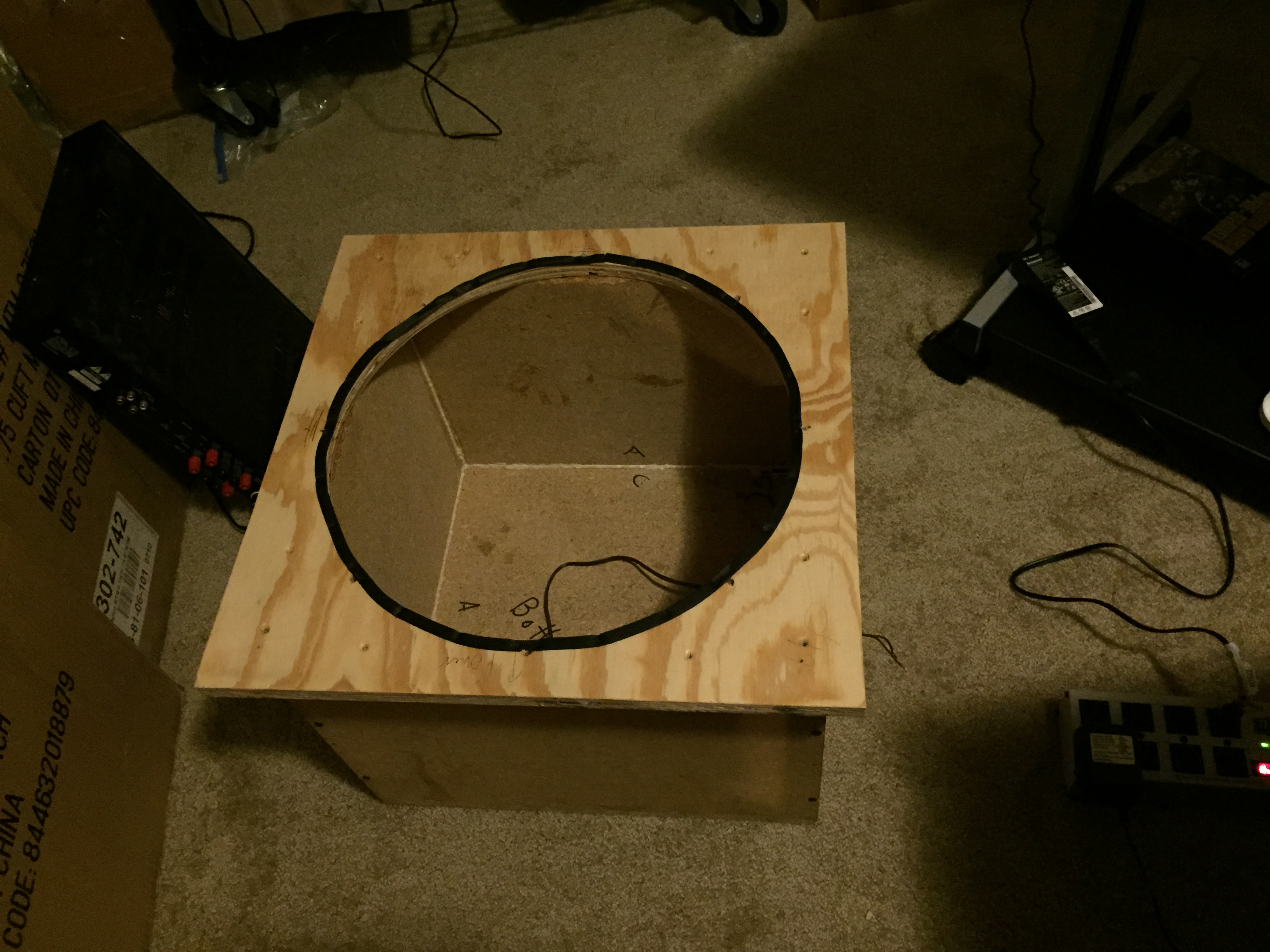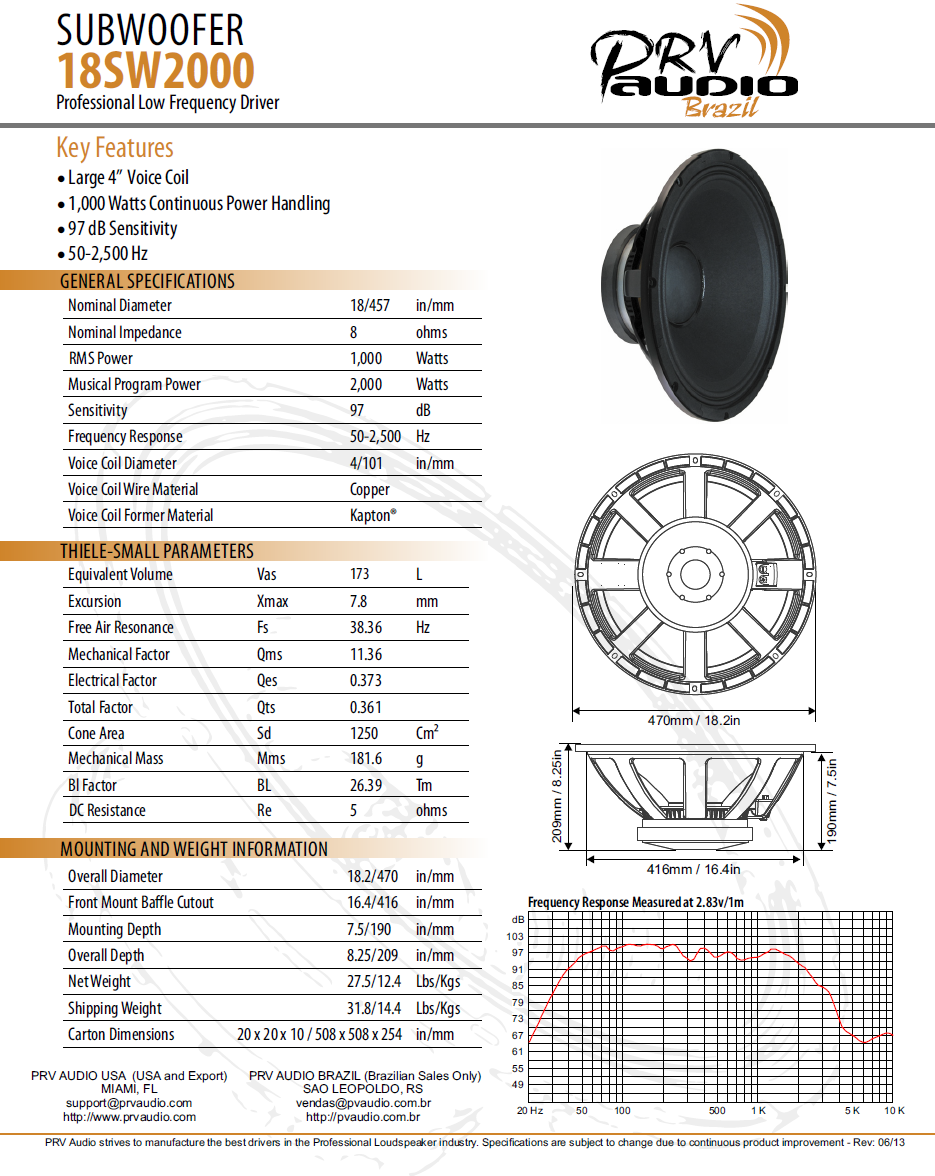Did I mention the game room I’m using for the home theater has a lot resonances? The formula for determining resonances in your listening room is to divide the dimensions into 50% of the speed of sound. Sound travels around 343 m/s… temperature and humidity factor into the exact number. That translates to 1125 ft/s, and half that is 563 ft/s. The game room’s dimensions are
- 17′ –> 33.0 Hz
- 14′ 6″ –> 38.8 Hz
- 10′ –> 56.2 Hz
The L-shaped sectional couch in the game room seems to have damped the 33 Hz resonance and its multiples quite a bit. That leaves 40 Hz as the strongest resonance.
Although resonances can be dealt with electronically via equalization, they also can be eliminated by application of damping material. The usual place to start is with “bass traps” in the corners. A typical bass trap is 2-6″ of high density fiberglass with usual dimensions of 2′ x 4′. I purchased a pair from GIK acoustics along with a 40 Hz tuned membrane bass absorber.
First up is the resonance absorber. It is 2′ x 2′ x 10″. I tried multiple positions and measured very little impact. I finally got desperate and put the bass absorber right on top of the subwoofer. Here is the measurement of before and after at my main listening position.

Blue is before, light green is after. So first thing is the absorption at 40 Hz is very small. I was afraid that this would be the case. Specifically, that a large number of the absorbers would be required to achieve any effect.
Next up are the bass traps. The units I purchased are the usual 2′ x 4′ and 4″ thick. They not entirely composed of absorbing fiber. An air gap is on the back side which improves the quantity of absorption. I also ordered the membrane option which adds a reflective membrane to the face of the bass trap. This reflects frequencies above 400 Hz so that the bass trap doesn’t absorb them. Here’s the measurement with a single bass trap located in the corner above the subwoofer (red) and the bass traps doubled up in the corner (green).

Wait, they don’t seem to absorb 40 Hz at all, how can these be called bass traps? These results are consistent with the advertised absorption characteristics of this type of absorber. Yeah, they don’t absorb deep bass. The peak at 43 Hz will have to be handled with electronic filters.
